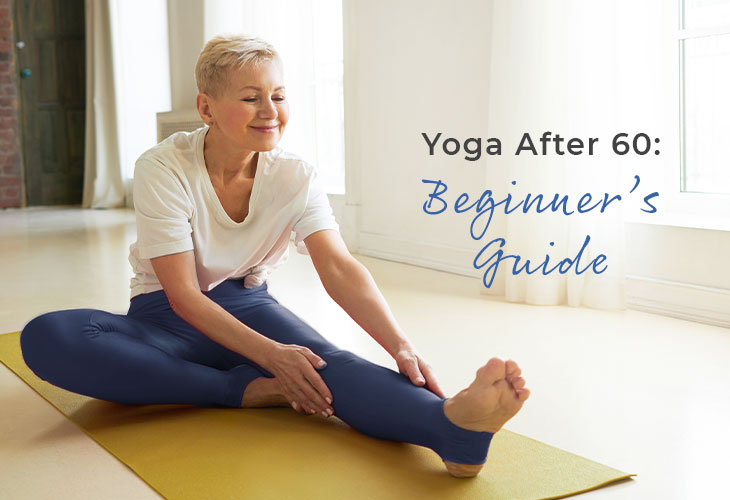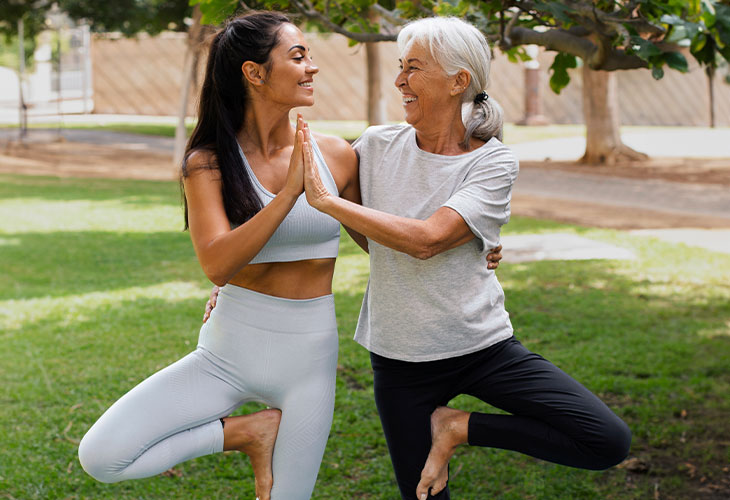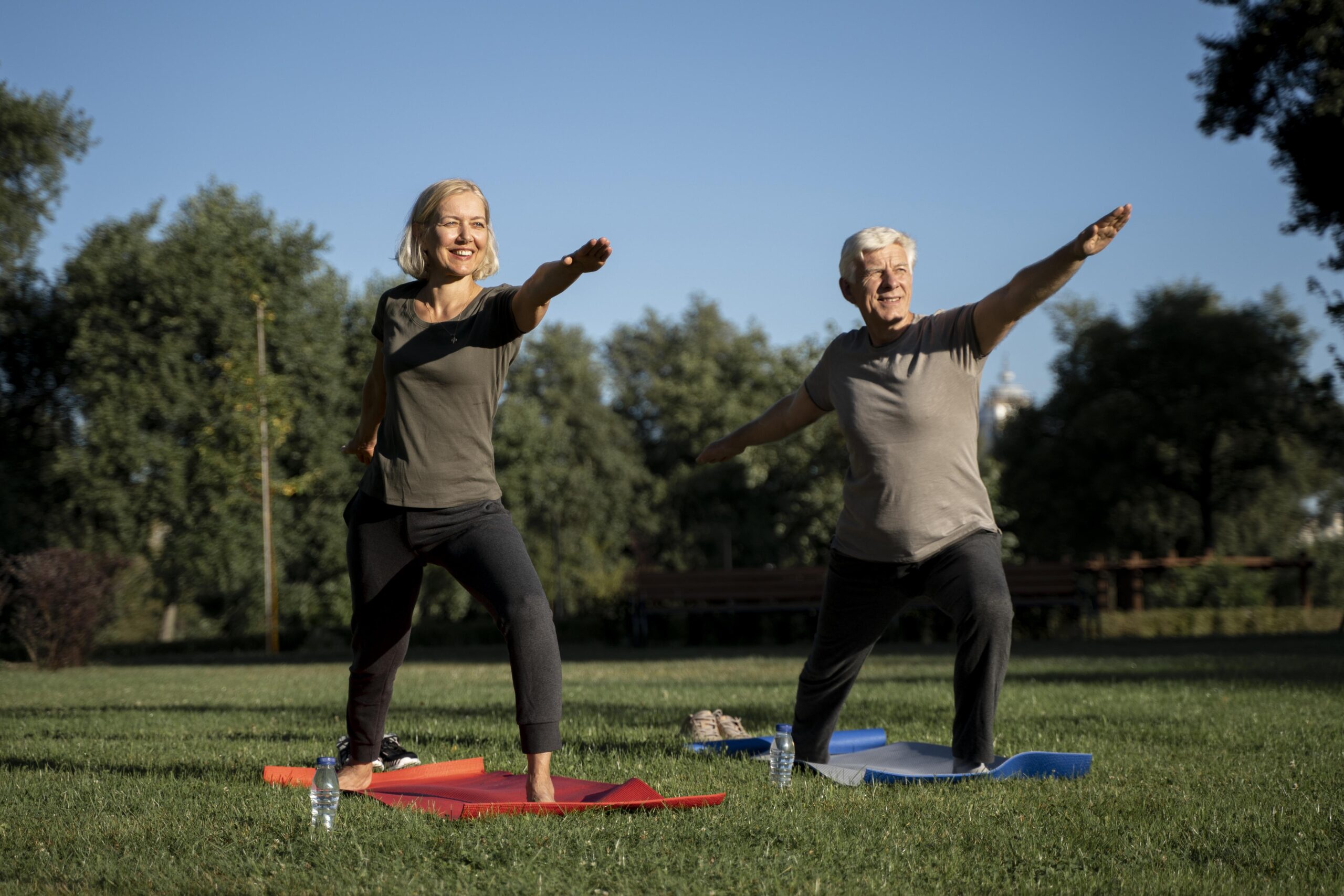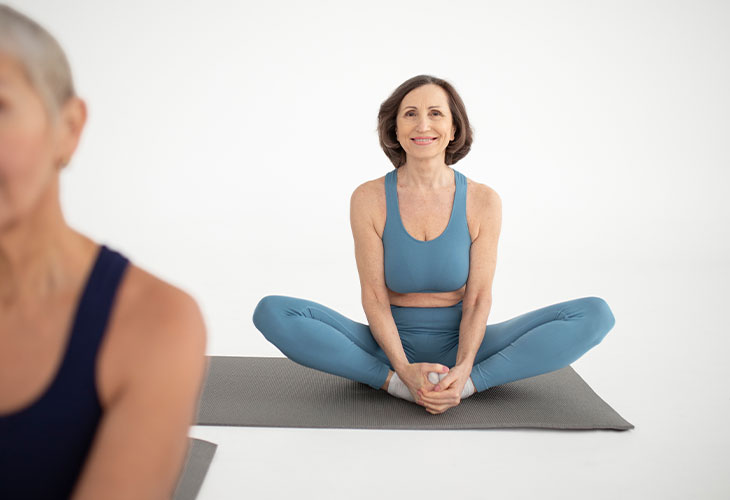“Is it too late?”
Not at all. For many people over 60, yoga becomes one of the most rewarding practices – nurturing strength, flexibility, balance, mental and a lighter step into each day.
If you’re curious about starting yoga later in life, this guide walks through everything you need – insights, gentle advice and practical steps to begin safely and confidently. This isn’t just about touching your toes, it’s about finding breath and balance with curiosity and kindness.
Why Yoga is Ideal After 60
Ageing well relies on strength, balance, flexibility and calm. Yoga targets all four in one gentle practice.
View this post on Instagram
Improved Strength & Bone Health
Holding poses like standing, seated or on all fours – activates leg, core and back muscles. These are the same muscles you use to walk, stand up or carry groceries.
- Hatha and Restorative yoga build strength gradually, without strain.
Better Balance & Fall Prevention
Balance tends to decline after 60, but yoga offers a safe way to practise.
- Simple standing poses (like Tree Pose, with modifications) train proprioception.
- Chair yoga provides stability until you’re ready to stand.
Increased Flexibility & Mobility
Gentle stretching through yoga releases tightness from sitting or inactivity, and keeps joints lubricated.
- Yin or Chair Yoga are ideal for easing into poses without strain.
Superior Mental Health
Yoga isn’t only physical; it’s a pathway to mental strength.
- Controlled breathing calms the nervous system.
- Mindfulness practices reduce stress and anxiety.
- A sense of routine brings comfort and structure to your day.
Enhanced Sleep & Well‑Being
Many older adults struggle with sleep. Yoga fosters the release of tension and helps promote natural sleep rhythms.
Cognitive Clarity & Memory
Meditation is an integral part of yoga. It supports attention, memory and emotional health. Science shows regular practice can slow cognitive decline and aid mood regulation.
Starting with the Right Mindset
One of the most compelling reasons to try yoga later in life is how it supports mental health and emotional well-being. After 60, life often shifts in new directions – retirement, empty nesting or managing health conditions – and yoga can be a grounding force through change. It provides a sense of routine, helps regulate your mood and fosters mindfulness, which reduces stress and improves how we respond to life’s challenges.
Studies show that older adults who practice yoga report feeling more connected to themselves and more in tune with their emotions. The breathing techniques and meditative focus in yoga help soothe the nervous system, lowering blood pressure and reducing the “fight or flight” response that causes anxiety. Over time, many people find that yoga becomes not just a form of exercise, but a trusted source of peace and calm in their lives.
- Be Curious – You’re not aiming for perfect form. You’re exploring how your body feels in each moment.
- Cultivate Patience – Yoga is a skill you’ll learn over time. Be gentle with yourself.
- Embrace Imperfection – Dropped poses or swaying from balance? It’s perfectly okay, each misstep is part of progress.
- Focus on Joy and Peace – Your intention might be calming, strengthening, or just moving – choose what suits you.
- Celebrate Tiny Wins – Every centimetre closer to your toes, a steadier stance, or a calmer mind is a win.
What Yoga Styles Are Best After 60?
Chair Yoga
Modify standing starting poses while seated. Great for balance, stretch, and breath, without standing risks.
Hatha Yoga
A gentle introduction to basic rules like poses, transitions, and breathwork in a mindful but gentle rhythm.
Restorative Yoga
Using bolsters and blankets, this style supports deep relaxation. Great for low-mobility or joint relief.
Yin Yoga
Holds are longer and more passive; it is ideal for easing deep connective tissues, but done carefully to avoid overstretching.
Gentle Flow or Slow Vinyasa
Shorter flows with supported transitions – focused on slow, balanced movement with props.
How to Prepare Practically
Starting yoga doesn’t require a huge investment, but having a few essentials can make the experience smoother and more enjoyable. You’ll need a mat with good grip, a strap or belt to help with stretches, and perhaps a cushion or folded blanket to support your hips or knees in seated poses. You’ll also want to find a quiet space where you won’t be interrupted.
One often overlooked aspect is clothing. What you wear truly matters – not just for style, but for comfort and breathability. Natural fabrics like Bamboo and Cotton are ideal for yoga because they allow the skin to breathe, wick away moisture, and offer flexibility.
Patra’s Bamboo-Cotton Top, Bamboo-Cotton Leggings and Back Slit Trousers are excellent choices for yoga. The top is soft, supportive and allows ease of movement, the leggings offer a gentle hug of support without feeling tight or restrictive, and the trousers are designed with pleats over the knee and open flaps at the back for flexibility.
Experience the benefits of our Bamboo yoga wear, thoughtfully crafted from natural fabrics. Whether you’re heading to a class or practising at home, our Bamboo activewear is designed to offer complete comfort and move with you through every pose and breath.
Made from a natural Bamboo and Cotton blend, it is soft, lightweight and breathable, helping the skin to wick moisture and naturally regulate body temperature. Bamboo provides exceptional softness, while Cotton ensures long-lasting durability. The fabric is gentle against the skin, making it perfect for regular practice and everyday wear.
When You Can’t Do the Pose
Yoga is meant to meet you where you are, not to push you into discomfort. There will be times when a pose feels too difficult, particularly if you have a back issue, knee problems, or another condition. That’s completely normal.
Most yoga instructors are trained to provide modifications and will be more than happy to assist you. If a pose feels too challenging, don’t force it. Simply sit cross-legged on your mat, focus on your breathing, and wait for the instructor to guide you to an alternative version that feels better for your body.
This ability to adapt is one of yoga’s greatest gifts. It encourages listening to your body’s needs in the moment and responding with compassion, not force. You are always in control.
Try It at Home First
If joining a class feels intimidating, know that you’re not alone. Fortunately, there are thousands of high-quality yoga videos online designed specifically for beginners and older adults. Starting with short, 5 to 10-minute routines at home can help build your confidence. You’ll become familiar with basic poses, breathing patterns, and transitions, so when you do decide to join a class, you’ll feel more prepared and relaxed.
Yoga Mindset Reminders
- Repetition brings confidence. A daily 10-minute practice is more beneficial than a weekly 60-minute practice.
- Celebrate micro-progress, like steadier standing or deeper exhalation.
- Track your practice – a note about how you feel can keep your motivation nurtured.
- Embrace rest days – gentle walking or deep breathing are still mindful and supportive.
Conclusion: Yoga Is Always Within Reach
Yoga after 60 is not only possible – it’s deeply meaningful. You don’t need flexibility, strength or experience. You need curiosity, breath, gentle instruction and compassion. It’s all about finding joy in your movement, peace in your breath, and confidence in your body at any age. Whether you’re seeking more strength, better sleep or a quieter mind, yoga offers tools you can use every single day.
With soft, breathable clothing from natural fabrics like those at Patra, a calm space, and a willingness to begin your yoga journey can start today. You are not too old. You are exactly where you need to be.
Start small. Move slowly. Let the quiet joy of yoga enrich your life.






